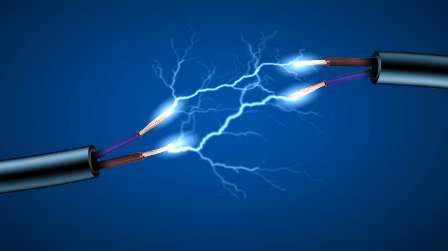Electricity DefinitionThe presence and movement of electric current are called electricity. Electricity is a phenomenon related to electrical charges that can be static or moving. Electricity is energy that powers motors and machines that produces light or heat. 
Best Electricity conductorsGold, copper, silver, aluminium, steel, and brass are some of the most popular and effective conductors of electricity. These elements have unique qualities that allow them to perform various functions. 1. Gold: The best conductor of electricity is gold. Gold does not tarnish quickly. It is the malleable, softest, and most ductile element. As gold is a costly material, we only utilize it for particular materials, like components of circuit boards or small electrical connectors. Some substances are gold-plated to be used as electrical conductors. Similarly, gold plating aids in lowering manufacturing costs. 2. Copper and Silver: Copper and silver are the most common electrical conductor. Silver is a fantastic conductor because it contains many moveable atoms. A good conductor has abundant free electrons, facilitating smooth electron flow and increasing conductivity. Silver is also very expensive. Because of this, we mostly use it in specialized equipment like circuit boards and satellites. Compared to silver, copper is a poor conductor. Since it is inexpensive, it is utilized to make common parts of household items. Numerous cables in our homes have copper plating. Copper is simple to solder and wrap into wires. Therefore, we commonly utilize it if we require a large quantity of conductive material. 3. Steel and Brass Alloys: A series of copper and zinc alloys are generally referred to as brass. Brasses have different ratios of zinc and copper, which can be changed to create a variety of alloys with various properties. Brass with a higher zinc content makes the material stronger and more flexible. This metal is ideal for small machines because it can be bent and moulded easily. However, it is more conductive and resists corrosion better than steel. Brass has many characteristics of copper because it is a copper-zinc alloy. 4. Aluminium: Aluminium is also an excellent conductor of electricity due to the abundant delocalized electrons. It is mostly used for high-voltage transmission lines, including overhead telephone cables and other lines. It is less expensive than copper. Electricity generationAs electricity is not naturally available, it should be "produced." The process of producing electricity from basic energy sources is known as electricity generation. At a power plant, electromechanical generators are typically used to produce electricity. These generators are primarily operated by heat engines that burn fuel. However, they can also be propelled by other forces like moving water or wind kinetic energy. Sources of electricity1. Renewable energy sources:Renewable energy is produced from a natural source, such as wind, water, or solar heat. These are endless sources of energy and are better for the environment. Some examples of renewable energy sources include:
Sunlight is the most common and unlimited energy source. Solar energy is generated from the sun. Many applications use solar technologies to provide heat, cooling, electricity, and fuels.
The wind is a reliable source of electricity. Although wind energy has been utilized for sails, windmills, and windpumps, it is now primarily employed to produce electricity. The kinetic energy of airflow is transformed into electricity.
Water power is another name for hydropower. The oldest and most common source of renewable energy is hydropower. When we use fast-moving water to produce electricity, it is known as hydropower. 2. Non-renewable Energy Sources:The "non-renewable resources" refers to resources that cannot be quickly regenerated after being used up. Non-renewable materials originate from the earth itself. Non-renewable resources like coal, nuclear energy, natural gas, and oil are utilized to generate electricity. FAQ on Electricity1. Which metal is a bad conductor of electricity? Answer: Tungsten 2. What are the methods of electricity generation? Answer:
Kinetic energy is converted into electricity by electric generators. This method is popular for producing electricity.
Electrochemistry converts chemical energy directly into electricity, as in a battery. The generation of electrochemical energy is crucial for portable and mobile applications.
Sunlight is converted into electrical energy through the photovoltaic effect. Although sunlight is free and unlimited, solar energy is typically more expensive to create than mechanically generated electricity due to the price of the panels. 3. Difference between renewable resources and non-renewable resources. Answer:
Next TopicEnzymes Definition
|
 For Videos Join Our Youtube Channel: Join Now
For Videos Join Our Youtube Channel: Join Now
Feedback
- Send your Feedback to [email protected]
Help Others, Please Share










